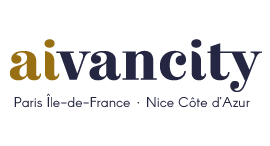By Dr. Tawhid CHTIOUI, President of aivancity School of AI & Data for Business & Society (France)
(Based on his interview in the Île-de-France special issue of ANDRH magazine – January 2025)
AI: A Dual Challenge for HR
Artificial intelligence plays a fundamental role in HR. It transforms the HR function itself by introducing tools to enhance recruitment, talent management, and predictive analysis of HR data. HR stands at the center of job and role transformations within organizations, guiding teams as they navigate increased automation and its organizational impacts. HR thus carries a unique responsibility: optimizing its own efficiency while acting as the conductor of this global evolution, which redefines the nature of work and demands thoughtful consideration of the new and essential skills required in the AI-driven era.
Leveraging AI to Transform HR and Boost Productivity
As with all functions, integrating AI and Data Science into HR offers significant productivity gains through smarter, automated processes. Beyond automating repetitive tasks, AI saves time and improves accuracy in sourcing and pre-selecting candidates using matching algorithms that identify the most relevant profiles based on specific criteria. Similarly, predictive analytics tools help HR anticipate turnover risks, enabling proactive talent retention strategies. AI also refines employee experience personalization, providing chatbots for routine administrative queries and recommending tailored training programs based on skill assessments and career paths. This alignment fosters professional development that meets organizational needs.
Additionally, AI can analyze sentiment and workplace well-being by processing data from regular feedback, surveys, or enterprise social networks to detect early signs of dissatisfaction or satisfaction. This enables timely managerial adjustments. AI also supports more objective performance evaluations by incorporating diverse indicators and minimizing human bias. By utilizing these solutions, HR frees up time to focus on strategic, high-value tasks such as employee engagement and support, while enhancing decision-making and directly contributing to the organization’s overall performance.
Supporting AI Deployment and Ensuring Skill Development
Deploying AI requires continuous support for employees. This involves raising awareness of AI tools and providing necessary training to develop key skills such as data management, algorithm interpretation, responsible use of generative AI tools, and addressing ethical and societal concerns, including confidentiality and fairness in automated decision-making. Another challenge is supporting leaders to become ambassadors of this transformation and facilitators of AI adoption across all organizational levels.
HR professionals thus become key players in skill evolution and role transitions, ensuring the implementation of continuous learning paths to align talent with the organization’s new technological needs.
Support from aivancity: Tailored Solutions for HR Needs
aivancity supports HR professionals on two levels: By directly training HR professionals in AI tools and applications through a dedicated certification program that goes beyond technical skills to encompass a comprehensive understanding of AI, including organizational challenges, legal issues, and human and societal impacts.
By offering tailored training paths for employees across various roles, adapting examples and practical cases to the company’s sector.
With our faculty of experts in AI and Data ecosystems, we empower HR teams to harness AI’s potential, improve practices, and accelerate team skill development. Our approach fosters sustainable learning adapted to AI’s rapid evolution, ensuring a positive and measurable impact for the organization. This is already being implemented with several companies and public institutions, yielding exceptional satisfaction and results.
Tips for Integrating AI into HR
To successfully integrate AI into HR, I recommend starting with an experimental phase, identifying specific processes where AI can deliver measurable benefits. HR should also focus on transparency and ethics in AI use, clearly explaining the objectives and mechanisms of deployed tools to employees. Finally, investing in training and employee support is essential—not just teaching how to use new tools, but also fostering an understanding of AI’s broader impact on their roles and the organization. Adopting an inclusive and responsible vision of AI transforms it into a powerful lever for innovation and improved organizational practices.

